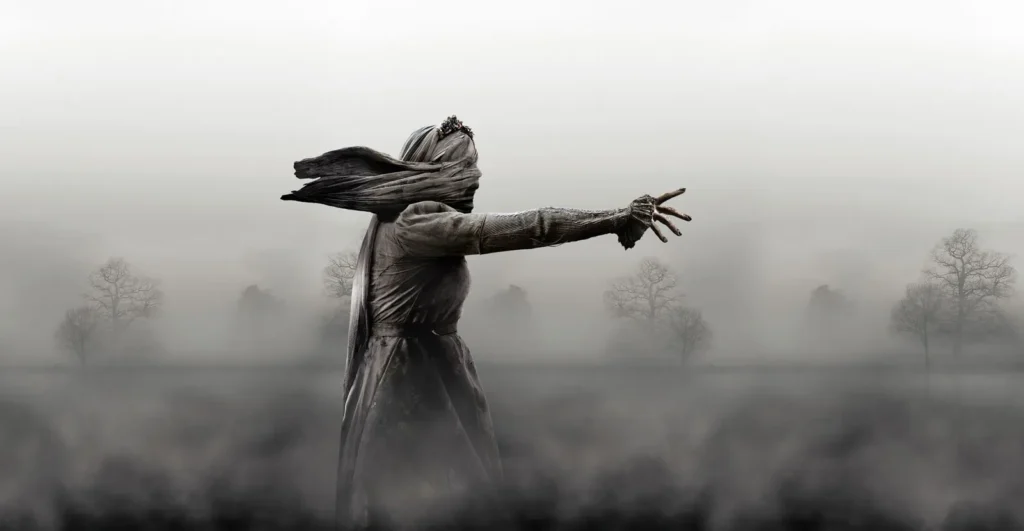Origins of La Llorona: A Tale of Tragedy and Jealousy
La Llorona, or the Weeping Woman, is a deeply haunting legend from Mexican and Hispanic folklore that has captivated and terrified generations. The story centers around Maria, a woman driven by a fit of jealousy after her husband left her for another. In a moment of despair and rage, she drowned her children in a river. Overcome with guilt and grief, Maria took her own life. According to legend, her ghost now wanders near bodies of water, crying out and searching for her lost children. Her mournful wails of “¡Ay, mis hijos!” (Oh, my children!) can be heard at night, sending chills down the spines of those who encounter her.
The Ghostly Appearance of La Llorona
La Llorona is often depicted as a ghostly woman dressed in a long, white gown, with her face obscured by a veil. This spectral figure is known to kidnap or harm children who venture too close to the water’s edge, mistaking them for her own lost children. Her presence is marked by an eerie silence followed by her heart-wrenching cries, creating an atmosphere of dread and sorrow. Some versions of the legend suggest that La Llorona is cursed to wander the Earth until she finds her children, while others imply she is condemned to eternal wandering as punishment for her unforgivable crime.
Variations and Cultural Significance
The legend of La Llorona has many variations, reflecting the diverse cultures and regions where the story is told. In some tales, La Llorona is portrayed as a vengeful spirit, exacting retribution on unfaithful husbands or those who cross her path. In others, she is a tragic figure, deserving of pity rather than fear. The story serves not only as a ghost story but also as a cultural touchstone, highlighting themes of motherhood, loss, and the consequences of one’s actions.
A Cautionary Tale for Children
Beyond its supernatural elements, the story of La Llorona serves as a powerful cautionary tale. Parents often use the legend to warn their children about the dangers of disobedience and the importance of staying away from bodies of water, especially at night. The fear of encountering La Llorona has kept countless children vigilant and cautious, instilling a sense of respect for the perils that the night and nature can hold. This cautionary aspect of the legend underscores its enduring impact on the cultural psyche.
La Llorona in Popular Culture
La Llorona’s chilling tale has transcended oral tradition, finding its way into literature, film, and art. She has been featured in numerous books, movies, and television shows, each retelling adding layers to her mythos. The 2019 horror film “The Curse of La Llorona” brought the legend to a global audience, further cementing her place in popular culture. These adaptations often explore the psychological and emotional depths of the legend, making La Llorona a symbol of enduring sorrow and supernatural retribution.
The Enduring Legacy of La Llorona
The legend of La Llorona remains a potent force in Mexican and Hispanic culture. Her story, filled with tragedy, remorse, and the supernatural, continues to be told and retold, preserving its place in the collective memory. La Llorona’s ghostly figure serves as a reminder of the consequences of our actions and the depths of maternal despair. Whether viewed as a cautionary tale or a chilling ghost story, La Llorona’s legacy endures, haunting the imaginations of those who hear her tale.
Conclusion: The Timeless Terror of La Llorona
La Llorona’s story is a testament to the power of folklore to convey deep emotional truths and societal values. Her legend, steeped in sorrow and supernatural dread, continues to resonate across generations and cultures. As a cautionary figure and a ghostly presence, La Llorona embodies the fears and hopes of the communities that keep her story alive. Her wails in the night serve as a timeless warning and a poignant reminder of the past’s grip on the present.

